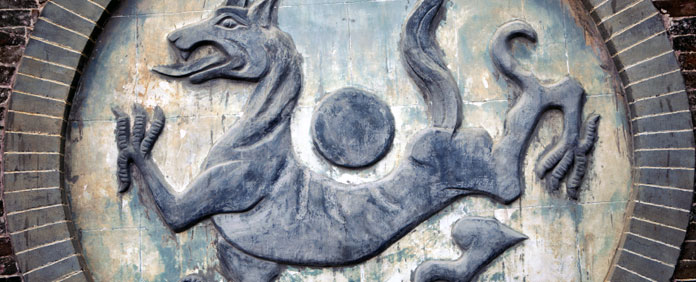Society for Ming Studies Membership Meeting April 1, 1016
Minutes respectfully submitted by Sarah Schneewind, Secretary pro tem of the Society.
Thirty-five people attended the meeting in the Sheraton Seattle Hotel, which convened at 8:30 pm.
President Rusk announced the publication of the English translation of Li Guangli’s 1957 History of the Ming Dynasty in the Ming Studies Research Series, available from Amazon.
President Rusk asked attendees to subscribe to the journal to be considered official members and earn all the glory thereunto attendant.
Yuming He and Sixiang Wang were unanimously elected to the Board. The chart of membership on the website, begun by Peter Ditmanson, should be updated to reflect this.
In response to a request by David Rolston, Ming Studies editor Ihor Pidhainy reported that Maney has been bought by Taylor and Francis. What exactly this will mean for us is not yet clear, but if it is a disaster, other companies having been bidding for us. President Rusk asked the members and other present to report to him, to Editor Pidhainy, or to Treasurer Heijdra if there are any problems with access. Rolston stated that his concern came from bad experiences CHINOPERL had had with T & F because it outsources production to India, but some consensus was reached that this may have stemmed from a truly awful flood. The flood cannot, however, explain their unfamiliarity with hanging indents.
A panel entitled “Language in the Ming” was then offered and received an enthusiastic response. “Spoken Mandarin in the Ming,” by Richard V. Simmons, of Rutgers University, showed that “Southern Mandarin” or Nanyin/guanhua, the lingua franca of Ming, characterized by 5 instead of 4 tones and other features identified in Lan Mao’s 1442 Yunlüe yitong and reflected in Jesuit sources, as Ming Taizu’s mother tongue and that of his generals and soldiers, spread widely after the conquest not only because of the prestige and personnel of the court, but also through military settlements, so that its direct descendents can be indentified in several places throughout China, each tied to a specific event or policy that sent soldiers to dwell there.
Catherine Swatek spoke on “Dialect in Kun Opera,” specifically in manuscripts associated with Li Yu’s early-Qing “Ten Thousand Li Reunion,” the paintings of which have been studied by Elizabeth Kindall. The manuscripts have text in more than one hand and offer corrections, poses and movements, stage directions, alternative versions of scenes, and added Suzhou dialect conversation. The dialect is spoken by three different role-types. It does not serve one single function, such as just adding comic relief by signalling bumpkin status as one might anticipate. It is not realistic, in the sense that it is not put in “local” mouths, but it used in various ways and in different situations to set up an us versus them dynamic. Questions and complications abound in these fascinating texts. Swatek plans to work further with living performers.
“Language and Empire: Asymmetries of Knowledge/Power in Early Modern China-Korea Relations” by Wang Sixiang opened with references to Said, Scott, and Mary Louise Pratt, and argued that while domination has been taken to mean that the center knows more about the locality than the locality about the center, the reverse was true in the Ming/Chosŏn relationship, for a number of reasons including the long-term relationship, effective Korean appropriation of metropolitan ideology, scattered Ming policy attention, and the fact that Ming’s potentially overwhelming force made it far more necessary for the Chosŏn side to understand than for the Ming side. Chosŏn bore the burden of maintaining communication, including providing and training interpreters, inventing Hangul to learn how to pronounce guanhua, creating primers, sending frequent embassies, and sending eunuchs to court and keeping up relations with them to gain information. Until the disastrous invasion by Hideyoshi, Chosŏn more or less managed to keep Ming at arm’s length, dissuading the rare Ming envoy from crossing the river and managing conversations to avoid miscommunication. This policy of staying under the radar enabled the Chosŏn side to stay safe. Wang argues that “the tributory system was actually crafted and maintained by the Chosŏn side” both in personnel and ideas. If Ming indeed had a concerted foreign policy, it was not one that the deeply invested Chosŏn state could perceive, so we probably won’t be able to, either.
With the end of meeting, the Presidency of the Society transferred to Anne Gerritsen.



